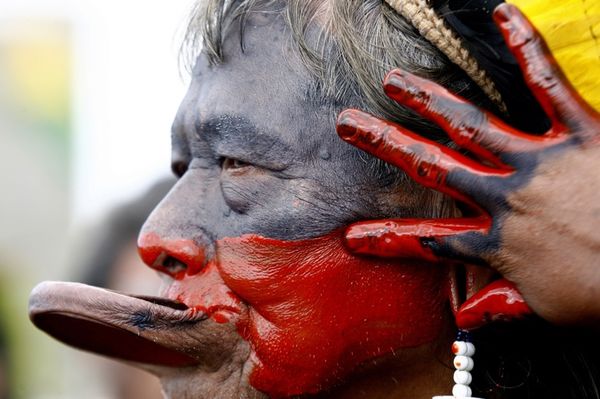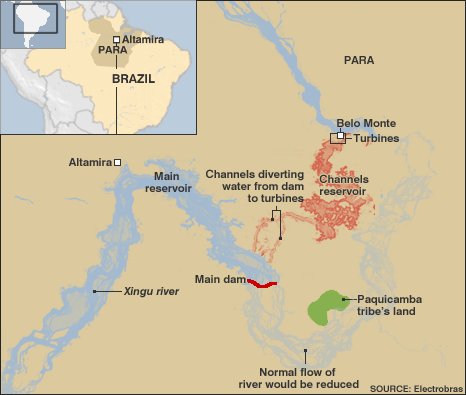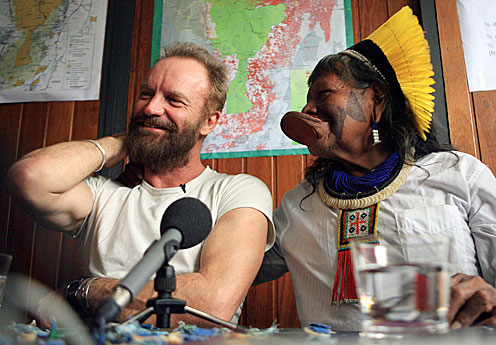Amazon Dam Sting, James Cameron Fought Against Gets Go-Ahead from Brazil Government
posted on March 15th, 2011 in Amazon Jungle, Brazil, Environment, Indigenous Rights
Chief Raoni, a Kayapo Indian, has been a central figure in fighting against the dam
Brazil court reverses Amazon Monte Belo dam suspension
March 3, 2011
BBC
A court in Brazil has approved a controversial hydro-electric project in the Amazon rainforest, overturning an earlier ruling.
Last week a judge blocked construction of the Belo Monte dam, saying it did not meet environmental standards.
But a higher court on Thursday said there was no need for all conditions to be met in order for work to begin.
Critics say the project threatens wildlife and will make thousands of people homeless…
The Monte Belo dam is a cornerstone of President Dilma Rousseff’s plan to upgrade Brazil’s energy infrastructure.
Controversial plan
Licences still have to be granted for the actual building of the plant, but in January, Brazilian environment agency Ibama gave the go-ahead to clear land at the site.
The government says the dam is crucial for development and will create jobs, as well as provide electricity to 23 million homes.
The 11,000-megawatt dam would be the third biggest in the world – after the Three Gorges in China and Itaipu, which is jointly run by Brazil and Paraguay.
It has long been a source of controversy, with bidding halted three times before the state-owned Companhia Hidro Eletrica do Sao Francisco was awarded the contract last year.
Celebrities such as the singer Sting and film director James Cameron have joined environmentalists in their campaign against the project.
They say the 6km (3.7 miles) dam will threaten the survival of a number of indigenous groups and could make some 50,000 people homeless, as 500 sq km (190 sq miles) of land would be flooded.



